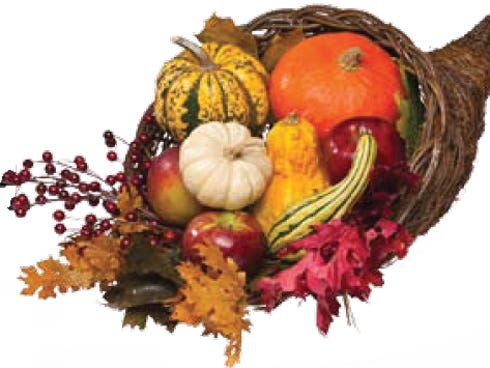
Turkey stuffing or pork stew?
New England harvest or Spanish landing in Florida?
Centuries-old tradition or fact-based alternative?
When it comes to Thanksgiving — make that Thanksgivings — Americans are free to enjoy several historical narratives.
The most prominent story, of the regional celebration that became a national holiday, is from Plymouth, Mass. In 1621, to celebrate an all-important corn harvest, the Pilgrims hunted wildfowl and held a feast that was attended by local Native Americans, who contributed five deer.
This was the famous “First Thanksgiving.”
Only it wasn’t first.
A Virginia plantation claims a thanksgiving celebration in 1619, two years before the Pilgrims. Some Texans argue for a thanksgiving near El Paso in 1598.
Decades before all of this, though, there was a well-documented feast to celebrate the landing of the Spanish in St. Augustine.
Michael Gannon of the University of Florida wrote about this first expedition in his church history, “The Cross in the Sand.” Colonial records described a feast day on Sept. 8, 1565.
“After mass, ‘the Adelantado had the Indians fed and dined himself,’ ” Gannon wrote. “It was the first community act of religion and thanksgiving in the first permanent settlement in the land.”
There’s just one problem with this “First Thanksgiving” in Florida: It wasn’t first, either.
Earlier Spanish explorers celebrated thanksgiving Masses throughout Florida. There’s even a French record of thanksgiving.
On June 30, 1564 — a year before the St. Augustine celebration — French colonists near Jacksonville enjoyed a feast with the Timucuan tribe. The Spanish soon destroyed this rival colony, but not before a captain named Rene de Laudonniere noted the event.
“We sang a psalm of Thanksgiving unto God,” Laudonniere wrote, “beseeching Him that it would please His Grace to continue His accustomed goodness toward us.”
Most Americans don’t think of the Spanish, much less the French, when it comes to Thanksgiving. They don’t think about Florida, either.
The New England tradition has a powerful hold on the national imagination.
Generations of elementary school students have enjoyed Thanksgiving history lessons that turned into colorful arts and crafts projects.
This is Americana: Construction paper, squeeze bottles of white glue and dull scissors with rounded tips. Indian headdresses, turkey hand outlines and black-and-white Pilgrim costumes. School plays, special lunch and a history pageant that sends kids home for the holiday.
There is an educational trend, though, for addressing what Gannon calls a “lost century” of American history. This includes Thanksgiving lessons about what happened in St. Augustine on Sept. 8.
“The Florida angle is something that’s new,” says Bernadette Bennett, a social studies program specialist for Sarasota County schools. “When you start the school year with a Thanksgiving celebration, it’s real high interest for kids.”
In the past, Florida history lessons often began in 1763, when the British took over the state. Now teachers want to address an era of Spanish control that lasted nearly 200 years.
“We don’t talk much about the Spanish influence in Florida,” Bennett says. “We don’t talk about the conquistadors the way we talk about the Pilgrims.
“Again, it comes back to perspective.”
Robyn Gioia, an elementary schoolteacher near Jacksonville, learned about Thanksgiving in Florida at a history workshop.
She began including the St. Augustine feast in her lessons. On Sept. 8, she would serve students cornbread and cocido, a pork-and-bean stew that historians think the Spanish would have eaten.
In 2007, Gioia wrote a children’s book called “America’s REAL First Thanksgiving.”
The Spanish in Florida was a welcome topic at Pineapple Press in Sarasota, which published the book.
“We knew about it,” says June Cussen at Pineapple Press. “We’re kind of saturated in Florida history around here.”
Gioia is still teaching — only this year she’s doing it in Japan.
In an email interview, she talked about different reactions to her book. A USA Today reporter told her about the difficulty he had pitching a story about this teacher down in Florida who said the first Thanksgiving was in St. Augustine.
“His editor said: ‘What? Is she some kind of kook!?’ ” Gioia writes. “I still laugh about that.”
Challenging accepted ideas about history is often easier for children.
“When it becomes part of the concept and they see how it works and they understand, it becomes a natural part of their knowledge,” she writes. “The reason adults cling to the Pilgrim Thanksgiving is because we made little turkeys as kids in school, we celebrated it with a huge dinner and relatives, and then it became known for shopping.
“It was easy and fun to remember and celebrate. Many others are starting their own traditions, and who knows what may come of it.”
Gannon wrote “The Cross in the Sand” back in 1965.
It was only 20 years later, after an interview with The Associated Press, that some New Englanders took his Florida scholarship as a threat to their most precious tradition.
He was dubbed “The Grinch who stole Thanksgiving.”
Gannon, now 86, still lives in Gainesville. He still laughs when he talks about the controversy. He still gets holiday phone calls from historians, teachers and reporters.
“It’s never-ending,” he says. “Every Thanksgiving.”
At home, Gannon is more of a traditionalist. No cocido for him today.
“I go with turkey,” he says.
For Gannon, the best part about the story is that it focuses attention on the early Spanish history of Florida. It’s also good for a laugh.
“I’ve had a lot of fun with it,” he says. “It’s an interesting historical point, is all.
Thomas Becnel is a columnist at the Herald Tribune. Contact him at thomas.becnel@heraldtribune.com.
This article originally appeared on Crestview News Bulletin: Where was the first Thanksgiving?
